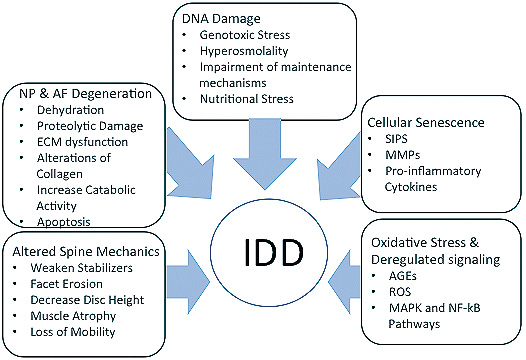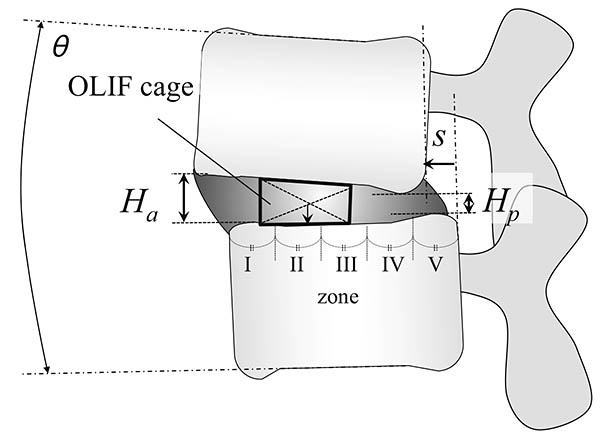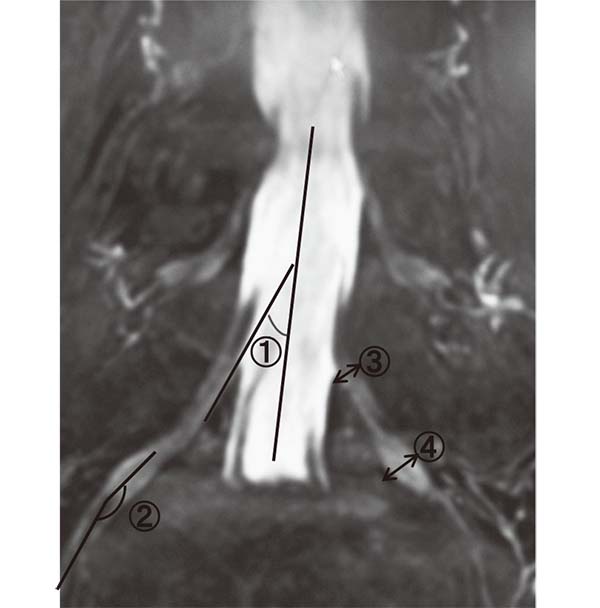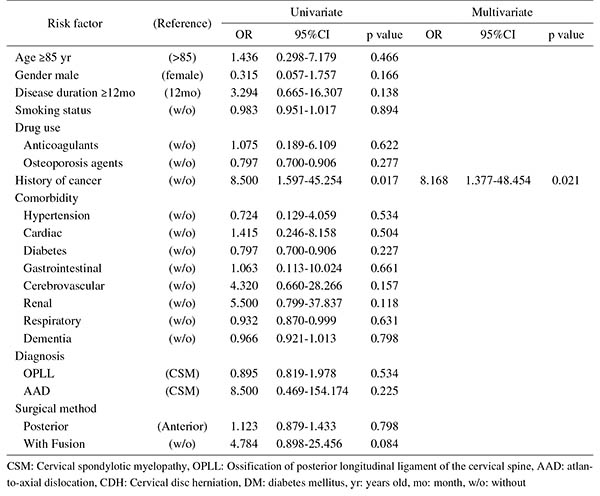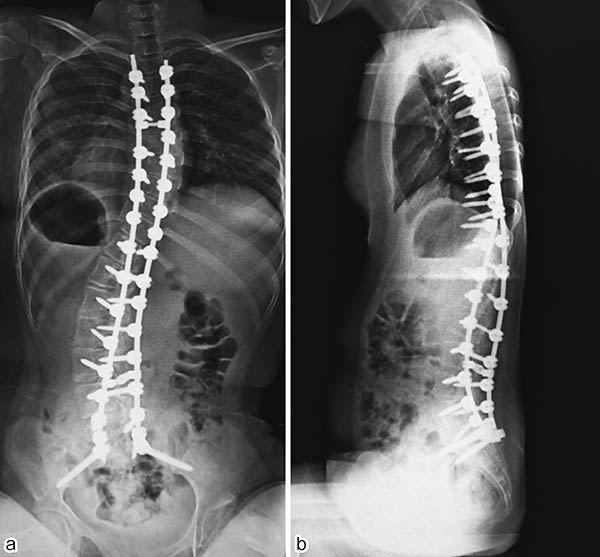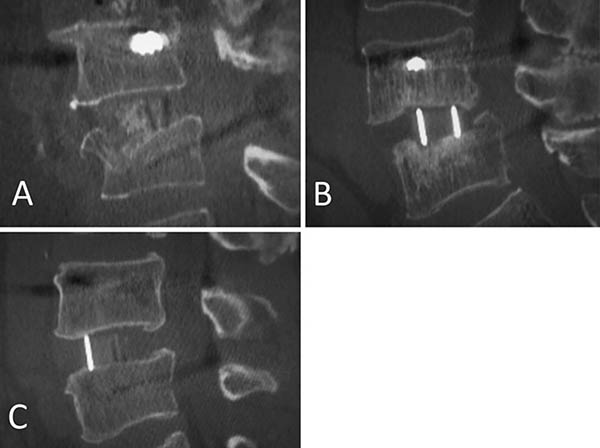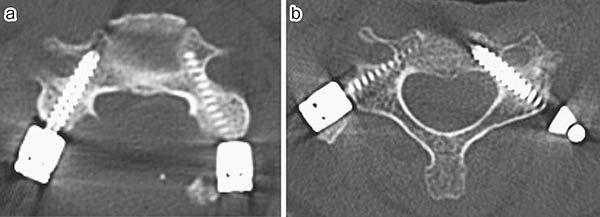- 著者
- Sean M. Rider Shuichi Mizuno James D. Kang
- 出版者
- The Japanese Society for Spine Surgery and Related Research
- 雑誌
- Spine Surgery and Related Research (ISSN:2432261X)
- 巻号頁・発行日
- vol.3, no.1, pp.1-11, 2019-01-25 (Released:2019-01-27)
- 参考文献数
- 179
- 被引用文献数
- 49
Intervertebral disc degeneration is a well-known cause of disability, the result of which includes neck and back pain with associated mobility limitations. The purpose of this article is to provide an overview of the known molecular mechanisms through which intervertebral disc degeneration occurs as a result of complex interactions of exogenous and endogenous stressors. This review will focus on some of the identified molecular changes leading to the deterioration of the extracellular matrix of both the annulus fibrosus and nucleus pulposus. In addition, we will provide a summation of our current knowledge supporting the role of associated DNA and intracellular damage, cellular senescence's catabolic effects, oxidative stress, and the cell's inappropriate response to damage in contributing to intervertebral disc degeneration. Our current understanding of the molecular mechanisms through which intervertebral disc degeneration occurs provides us with abundant insight into how physical and chemical changes exacerbate the degenerative process of the entire spine. Furthermore, we will describe some of the related molecular targets and therapies that may contribute to intervertebral repair and regeneration.
- 著者
- Daisuke Numaguchi Keiji Wada Mitsuru Yui Ryo Tamaki Ken Okazaki
- 出版者
- The Japanese Society for Spine Surgery and Related Research
- 雑誌
- Spine Surgery and Related Research (ISSN:2432261X)
- 巻号頁・発行日
- vol.3, no.2, pp.141-145, 2019-04-27 (Released:2019-04-27)
- 参考文献数
- 19
- 被引用文献数
- 3 6
Introduction: The incidence of remote cerebellar hemorrhage (RCH) in patients with a dural tear during spinal surgery is unclear. The purpose of this study was to determine the incidence of RCH and the causative factors in these patients.Methods: Two hundred and thirty-nine patients underwent spinal surgery at our institution between March 2015 and September 2016. Eleven of these patients needed dural suturing intraoperatively. All patients underwent CT of the head on the first postoperative day and were categorized according to whether they had RCH or not. The mean values for the amount of intraoperative bleeding, maximum perioperative blood pressure, postoperative drainage volume, and complaints of headache during the first 24 h postoperatively were compared between the two groups using the Welch's two-sample t-test and Fisher's exact test. The follow-up duration was 12 months.Results: There were four patients in the RCH group and seven in the non-RCH group. The incidence of RCH was 36.4%. There were three cerebellar hemorrhages and one interhemispheric fissure hemorrhage in the RCH group. The mean intraoperative bleeding volume was 284 mL in the RCH group and 569 mL in the non-RCH group. The mean respective values for maximum perioperative blood pressure and postoperative drainage volume were 132 mmHg and 547 mL in the RCH group and 144 mmHg and 567 mL in the non-RCH group; none of the differences was statistically significant. However, complaints of headache in the first 24 h postoperatively were significantly more common in the RCH group than in the non-RCH group (100% vs. 14.3%; p = 0.01). All patients with intracranial bleeding had recovered 3 months after surgery.Conclusions: The incidence of RCH following a dural tear during spinal surgery was 36.4%. There was a significant association between RCH and increased reporting of headache during the first 24 h postoperatively.
- 著者
- G. Michael Mallow Alexander Hornung Juan Nicolas Barajas Samuel S. Rudisill Howard S. An Dino Samartzis
- 出版者
- The Japanese Society for Spine Surgery and Related Research
- 雑誌
- Spine Surgery and Related Research (ISSN:2432261X)
- 巻号頁・発行日
- vol.6, no.2, pp.93-98, 2022-03-27 (Released:2022-03-27)
- 参考文献数
- 46
- 被引用文献数
- 10
With the emergence of big data and more personalized approaches to spine care and predictive modeling, data science and deep analytics are taking center-stage. Although current techniques in machine learning and artificial intelligence have gained attention, their applications remain limited by their reliance on traditional analytic platforms. Quantum computing has the ability to circumvent such constraints by attending to the various complexities of big data while minimizing space and time dimensions within computational algorithms. In doing so, quantum computing may one day address research and clinical objectives that currently cannot be tackled. Understanding quantum computing and its potential to improve patient management and outcomes is therefore imperative to drive further advancements in the spine field for the next several decades.
- 著者
- Yoshiharu Kawaguchi
- 出版者
- The Japanese Society for Spine Surgery and Related Research
- 雑誌
- Spine Surgery and Related Research (ISSN:2432261X)
- 巻号頁・発行日
- pp.2017-0007, (Released:2018-02-28)
- 被引用文献数
- 23
This is a review paper on the topic of genetic background of degenerative disc diseases in the lumbar spine. Lumbar disc diseases (LDDs), such as lumbar disc degeneration and lumbar disc herniation, are the main cause of low back pain. There are a lot of studies that tried to identify the causes of LDDs. The causes have been categorized into environmental factors and genetic factors. Recent studies revealed that LDDs are mainly caused by genetic factors. Numerous studies have been carried out using the genetic approach for LDDs. The history of these studies is divided into three periods: (1) era of epidemiological research using familial background and twins, (2) era of genomic research using DNA polymorphisms to identify susceptible genes for LDDs, and (3) era of functional research to determine how the genes cause LDDs. This review article was undertaken to present the history of genetic approach to LDDs and to discuss the current issues and future perspectives.
- 著者
- Hernán Gallego Sergio Arango Andrés Combalia Salvador Fuster Catalina Jaramillo Ana Milena Herrera
- 出版者
- The Japanese Society for Spine Surgery and Related Research
- 雑誌
- Spine Surgery and Related Research (ISSN:2432261X)
- 巻号頁・発行日
- pp.2023-0032, (Released:2023-08-10)
Background: Failed back surgery syndrome (FBSS) is a common and incapacitating condition affecting patients with previous spine surgery in whom treatment approach can be challenging. This study aimed to summarize existing secondary studies and up-to-date randomized clinical trials (RCTs) that assess the effectiveness of available treatment options for FBSS.Methods: Systematic searches were carried out in five databases (PubMed, Cochrane, Scielo, Epistemonikos, and Google scholar) for all systematic reviews on the effectiveness of treatment options for FBSS published after 2012. Outcomes of interest were pain levels measured through visual analog scale or numeric rating scale, Oswestry Disability Index, and quality of life. Methodological and risk of bias assessments were performed with the AMSTAR-2 tool for systematic reviews and the Joanna Briggs Institute checklist for RCT. Prospective PROSPERO registration: CRD42022307609.Results: Fifteen studies, seven systematic reviews, and eight RCTs met the inclusion criteria and fulfilled the methodological quality assessment. Of the 15 included studies, 8 were on neurostimulation, 4 on adhesiolysis, 4 on epidural or intrathecal injections, and 3 on other treatment modalities. The risk of bias was low in seven studies, moderate in five, and high in three.Conclusions: Based on this systematic overview and the considerable heterogeneity among studies, the FBSS therapeutic approach must be individualized. FBSS treatment should start with conservative management, considering the implementation of neurostimulation, a technique with the most robust evidence of effective results, in cases of refractory axial or neuropathic pain. As the last resource, in light of the evidence found, more invasive procedures or new surgical interventions are indicated.
2 0 0 0 OA The Essence of Clinical Practice Guidelines for Lumbar Disc Herniation, 2021: 4. Treatment
- 著者
- Daisuke Sakai
- 出版者
- The Japanese Society for Spine Surgery and Related Research
- 雑誌
- Spine Surgery and Related Research (ISSN:2432261X)
- 巻号頁・発行日
- vol.6, no.4, pp.329-332, 2022-07-27 (Released:2022-07-27)
- 参考文献数
- 13
- 被引用文献数
- 2
2 0 0 0 OA Barbed Suture Versus Interrupted Suture in Posterior Cervical Spine Surgery: Are They Equivalent?
- 著者
- Alan R. Tang Anthony M. Steinle Hani Chanbour Godwin Emeka-Ibe Byron F. Stephens Scott L. Zuckerman Amir M. Abtahi
- 出版者
- The Japanese Society for Spine Surgery and Related Research
- 雑誌
- Spine Surgery and Related Research (ISSN:2432261X)
- 巻号頁・発行日
- pp.2022-0076, (Released:2022-06-28)
- 被引用文献数
- 2
Introduction: Posterior cervical spine approaches have been associated with increased rates of wound complications compared to anterior approaches. While barbed suture wound closure for lumbar spine surgery has been shown to be safe and efficacious, there is no literature regarding its use in posterior cervical spine surgery. In a cohort of patients undergoing elective posterior cervical spine surgery, we sought to compare postoperative complication rates between barbed and traditional interrupted suture closure.Methods: A retrospective review of demographics, past medical history, and operative and postoperative variables collected from a prospective registry between July 1, 2016, and June 30, 2020 was undertaken. All patients 18 years old and above undergoing elective posterior cervical fusion were included. The primary outcome of interest was wound complications, including surgical site infection (SSI), dehiscence, or hematoma. In addition, numerical rating scale (NRS) neck pain (NP), NRS arm pain (AP), Neck Disability Index (NDI), and operative time were collected. A variety of statistical tests were used to compare the two suture groups.Results: Of 117 patients undergoing posterior cervical fusion, 89 (76%) were closed with interrupted suture and 28 (24%) with barbed suture. The interrupted cohort were more likely to have >1 comorbidity (p < 0.001), diabetes mellitus (p = 0.013), and coronary artery disease (p = 0.002). No difference in postoperative wound complications between interrupted/barbed sutures was observed after univariate (OR 1.07, 95% CI: 0.27–4.25, p = 0.927) and multivariable logistic regression analysis (OR 0.77, 95% CI: 0.15–4.00, p = 0.756). Univariate logistic regression revealed no differences in achieving minimal clinically important difference (MCID) NRS-NP (OR 0.73, 95% CI: 0.28–1.88, p = 0.508) or NRS-AP (OR 0.68, 95% CI: 0.25–1.90, p = 0.464) at 3 months between suture groups. The interrupted suture group was less likely to achieve MCID NDI at 3 months (OR 0.29, 95% CI: 0.11–0.80, p = 0.016)Conclusions: Barbed suture closure in posterior cervical spine surgery does not lead to higher rates of postoperative wound complications/SSI compared to traditional interrupted fascial closure.
- 著者
- Inamullah Khan Scott L. Parker Hansen Bow Ahilan Sivaganesan Jacquelyn S. Pennings Byron F. Stephens II Anthony M. Steinle Rishabh Gupta Clinton J. Devin
- 出版者
- The Japanese Society for Spine Surgery and Related Research
- 雑誌
- Spine Surgery and Related Research (ISSN:2432261X)
- 巻号頁・発行日
- pp.2021-0252, (Released:2022-04-12)
- 被引用文献数
- 3
Background: Surgical management of degenerative lumbar spine disorders is effective at improving patient pain, disability, and quality of life; however, obtaining a durable posterolateral fusion after decompression remains a challenge. Interbody fusion technologies are viable means of improving fusion rates in the lumbar spine, specifically various graft materials including autograft, structural allograft, titanium, and polyether ether ketone. This study assesses the effectiveness of Tritanium posterolateral cage in the treatment of degenerative disk disease.Methods: Nearest-neighbor 1:1 matched control transforaminal lumbar interbody fusion with PEEK vs. Tritanium posterior lumbar (PL) cage interbody fusion patients were identified using propensity scoring from patients that underwent elective surgery for degenerative disk diseases. Line graphs were generated to compare the trajectories of improvement in patient-reported outcomes (PROs) from baseline to 3 and 12 months postoperatively. The nominal data were compared via the χ2 test, while the continuous data were compared via Student's t-test.Results: The two groups had no difference regarding either the 3- or 12-month Euro-Qol-5D (EQ-5D), numeric rating scale (NRS) leg pain, and NRS back pain; however, the Tritanium interbody cage group had better Oswestry Disability Index (ODI) scores compared to the control group of the PEEK interbody cage at both 3 and 12 months (p = 0.013 and 0.048).Conclusions: Our results indicate the Tritanium cage is an effective alternative to the previously used PEEK cage in terms of PROs, surgical safety, and radiological parameters of surgical success. The Tritanium cohort showed better ODI scores, higher fusion rates, lower subsidence, and lower indirect costs associated with surgical management, when compared to the propensity-matched PEEK cohort.
- 著者
- Masashi Uehara Shota Ikegami Takashi Takizawa Hiroki Oba Noriaki Yokogawa Takeshi Sasagawa Kei Ando Hiroaki Nakashima Naoki Segi Toru Funayama Fumihiko Eto Akihiro Yamaji Kota Watanabe Satoshi Nori Kazuki Takeda Takeo Furuya Sumihisa Orita Hideaki Nakajima Tomohiro Yamada Tomohiko Hasegawa Yoshinori Terashima Ryosuke Hirota Hidenori Suzuki Yasuaki Imajo Hitoshi Tonomura Munehiro Sakata Ko Hashimoto Yoshito Onoda Kenichi Kawaguchi Yohei Haruta Nobuyuki Suzuki Kenji Kato Hiroshi Uei Hirokatsu Sawada Kazuo Nakanishi Kosuke Misaki Hidetomi Terai Koji Tamai Eiki Shirasawa Gen Inoue Kenichiro Kakutani Yuji Kakiuchi Katsuhito Kiyasu Hiroyuki Tominaga Hiroto Tokumoto Yoichi Iizuka Eiji Takasawa Koji Akeda Norihiko Takegami Haruki Funao Yasushi Oshima Takashi Kaito Daisuke Sakai Toshitaka Yoshii Tetsuro Ohba Bungo Otsuki Shoji Seki Masashi Miyazaki Masayuki Ishihara Seiji Okada Yasuchika Aoki Katsumi Harimaya Hideki Murakami Ken Ishii Seiji Ohtori Shiro Imagama Satoshi Kato
- 出版者
- The Japanese Society for Spine Surgery and Related Research
- 雑誌
- Spine Surgery and Related Research (ISSN:2432261X)
- 巻号頁・発行日
- pp.2021-0183, (Released:2021-12-27)
- 被引用文献数
- 2
Background: In elderly patients with cervical spinal cord injury, comorbidities such as cardiovascular and cerebrovascular diseases are common, with frequent administration of antiplatelet/anticoagulant (APAC) drugs. Such patients may bleed easily or unexpectedly during surgery despite prior withdrawal of APAC medication. Few reports have examined the precise relationship between intraoperative blood loss and history of APAC use regarding surgery for cervical spine injury in the elderly.The presentmulticenter database survey aimed to answer the question of whether the use of APAC drugs affected the amount of intraoperative blood loss in elderly patients with cervical spinal cord trauma.Methods: The case histories of 1512 patients with cervical spine injury at 33 institutes were retrospectively reviewed. After excluding cases without spinal surgery or known blood loss volume, 797 patients were enrolled. Blood volume loss was the outcome of interest. We calculated propensity scores using the inverse probability of treatment weighting (IPTW) method. As an alternative sensitivity analysis, linear mixed model analyses were conducted as well.Results: Of the 776 patients (mean age: 75.1 ± 6.4 years) eligible for IPTW calculation, 157 (20.2%) were taking APAC medications before the injury. After weighting, mean estimated blood loss was 204 mL for non-APAC patients and 215 mL for APAC patients. APAC use in elderly patients was not significantly associated with surgical blood loss according to the IPTW method with propensity scoring or linear mixed model analyses. Thus, it appeared possible to perform surgery expecting comparable blood loss in APAC and non-APAC cases.Conclusions: This multicenter study revealed no significant increase in surgical blood loss in elderly patients with cervical trauma taking APAC drugs. Surgeons may be able to prioritize patient background, complications, and preexisting conditions over APAC use before injury when examining the surgical indications for cervical spine trauma in the elderly.
- 著者
- Kazuhide Inage Takeshi Sainoh Takayuki Fujiyoshi Otagiri Takuma Yasuchika Aoki Masahiro Inoue Yawara Eguchi Sumihisa Orita Yasuhiro Shiga Masao Koda Tsutomu Akazawa Takeo Furuya Junichi Nakamura Hiroshi Takahashi Miyako Suzuki Satoshi Maki Hideyuki Kinoshita Masaki Norimoto Tomotaka Umimura Takashi Sato Masashi Sato Masahiro Suzuki Keigo Enomoto Hiromitsu Takaoka Norichika Mizuki Takashi Hozumi Ryuto Tsuchiya Geundong Kim Tomohito Mukaihata Takahisa Hishiya Seiji Ohtori
- 出版者
- The Japanese Society for Spine Surgery and Related Research
- 雑誌
- Spine Surgery and Related Research (ISSN:2432261X)
- 巻号頁・発行日
- pp.2020-0042, (Released:2020-07-10)
- 被引用文献数
- 3
Introduction: Mirogabalin should be equivalent to pregabalin, but with fewer incidences of adverse drug reactions (ADRs). To verify these benefits in actual clinical trials, our study investigated the frequency of ADRs and mirogabalin' s analgesic effects during treatment of peripheral neuropathic pain.Methods: This study included 74 patients with lower limb pain. We surveyed patient reports of ADRs during the follow-up period as the primary endpoint and examined the visual analog scale (VAS) reported for lower limb pain as the secondary endpoint (before administration, and two and four weeks after administration).Results: The occurrence of ADR was 27.0%, like the frequency of ADRs in the clinical trials for other disorders. However, the discontinuation rate of administration was 10.8%, which was significantly lower than the frequency of ADR occurrences. When the analgesic effect was assessed, a significant decrease in the temporal change of VAS for lower limb pain was observed before administration, and two and four weeks after administration.Conclusions: In this study, the occurrence of ADRs reported by the patients was like the frequency of ADRs reported in the clinical trials for other disorders. When assessing the analgesic effect, the temporal change of VAS for lower limb pain was found to decrease significantly before administration, and two and four weeks after administration.
2 0 0 0 OA Dash-Associated Spondylolysis Hypothesis
- 著者
- Tsuyoshi Goto Toshinori Sakai Kosuke Sugiura Hiroaki Manabe Masatoshi Morimoto Fumitake Tezuka Kazuta Yamashita Yoichiro Takata Takashi Chikawa Shinsuke Katoh Koichi Sairyo
- 出版者
- The Japanese Society for Spine Surgery and Related Research
- 雑誌
- Spine Surgery and Related Research (ISSN:2432261X)
- 巻号頁・発行日
- pp.2018-0020, (Released:2018-08-25)
- 被引用文献数
- 4
Purpose: In past biomechanical studies, repetitive motion of lumbar extension, rotation, or a combination of both, frequently seen in batting or pitching practice in baseball, shooting practice in soccer, and spiking practice in volleyball, have been considered important risk factors of lumbar spondylolysis. However, clinically, these have been identified in many athletes performing on a running track or on the field, which requires none of the practices described above. The purpose of this study was to verify how much impact running has on the pathologic mechanism of lumbar spondylolysis.Methods: In study 1, 89 consecutive pediatric patients diagnosed with lumbar spondylolysis at a single outpatient clinic between January 2012 and February 2017 were retrospectively analyzed. In study 2, motion analysis was performed on 17 male volunteers who had played on a soccer team without experiencing low back pain or any type of musculoskeletal injury. A Vicon motion capture system was used to evaluate four movements: maximal effort sprint (Dash), comfortable running (Jog), instep kick (Shoot), and inside kick (Pass).Results: In study 1, 13 of the 89 patients with lumbar spondylolysis were track and field athletes. In study 2, motion analysis revealed that the hip extension angle, spine rotation angle, and hip flexion moment were similar in Dash and Shoot during the maximum hip extension phase. The pelvic rotation angle was significantly greater in the kicking conditions than in the running conditions.Conclusions: Kinematically and kinetically, the spinopelvic angles in Dash were considered similar to those in Shoot. Dash could cause mechanical stress at the pars interarticularis of the lumbar spine, similar to that caused by Shoot, thus leading to spondylolysis.
- 著者
- Yusuke Yamamoto Eiichiro Iwata Hideki Shigematsu Hiroshi Nakajima Masato Tanaka Akinori Okuda Yasuhiko Morimoto Keisuke Masuda Munehisa Koizumi Yasuhito Tanaka
- 出版者
- The Japanese Society for Spine Surgery and Related Research
- 雑誌
- Spine Surgery and Related Research (ISSN:2432261X)
- 巻号頁・発行日
- pp.2017-0052, (Released:2018-02-28)
- 被引用文献数
- 6
Introduction To identify the temporal comparison of biochemical markers for early detection of surgical site infection (SSI) following instrumented spinal fusion that are not affected by operative factors.Materials and methods We reviewed data on C-reactive protein level and total white blood cell count and differential count before instrumented spinal fusion and at 1, 4, and 7 days postoperatively. The 141 patients in our sample were divided into an SSI group (patients who developed deep SSI) and a non-SSI group. We investigated the peak or nadir value day and identified those not affected by operative circumstances (operating time, intraoperative blood loss, and number of fusion segments) in the non-SSI group. If there was a significant difference between the peak or nadir value day and the next survey day, we considered the temporal comparison between these unaffected markers as an indicator of SSI and examined the usefulness of these indicators by calculating sensitivity and specificity. Furthermore, we investigated the usefulness of the combination of these markers (if even each one marker was recognized, we considered it positive).Results Four biochemical markers of SSI were selected: neutrophil percentage at postoperative day 4 more than day 1 (sensitivity 36%, specificity 95%), neutrophil count at postoperative day 4 more than day 1 (sensitivity 46%, specificity 93%), lymphocyte percentage at postoperative day 4 less than day 1 (sensitivity 36%, specificity 90%), and lymphocyte count at postoperative day 4 less than day 1 (sensitivity 36%, specificity 90%). The combination of these markers showed sensitivity 100%, specificity 80%, respectively.Conclusions Four markers are reliable indicators for early detection of SSI following spinal instrumented fusion because they are not affected by operative factor. The combination of each indicator had both high sensitivity and specificity. Therefore, it is reliable and much useful for early detection of SSI.
- 著者
- Yasuhiro Shiga Sumihisa Orita Kazuhide Inage Jun Sato Kazuki Fujimoto Hirohito Kanamoto Koki Abe Go Kubota Kazuyo Yamauchi Yawara Eguchi Masahiro Inoue Hideyuki Kinoshita Yasuchika Aoki Junichi Nakamura Yusuke Matsuura Richard Hynes Takeo Furuya Masao Koda Kazuhisa Takahashi Seiji Ohtori
- 出版者
- The Japanese Society for Spine Surgery and Related Research
- 雑誌
- Spine Surgery and Related Research (ISSN:2432261X)
- 巻号頁・発行日
- vol.1, no.4, pp.197-202, 2017-10-20 (Released:2017-11-27)
- 参考文献数
- 24
- 被引用文献数
- 22 25
Introduction: Oblique lateral interbody fusion (OLIF) can achieve recovery of lumbar lordosis (LL) in minimally invasive manner. The current study aimed to evaluate the location of lateral intervertebral cages during OLIF in terms of LL correction.Methods: The subjects were patients who underwent OLIF for lumbar degenerative diseases, including lumbar spinal stenosis, spondylolisthesis, and discogenic low back pain. Their clinical outcome was evaluated using visual analogue scale on lower back pain (LBP), leg pain and numbness. The following parameters were retrospectively evaluated on plain radiographic images and computed tomography scans before and at 1 year after OLIF: the intervertebral height, vertebral translation, and sagittal angle. The cage position was defined by equally dividing the caudal endplate into five zones (I to V), and its association with segmental lordosis restoration was analyzed. Subjects were also evaluated for a postoperative endplate injury.Results: Eighty patients (121 fused levels) with lumbar degeneration who underwent OLIF were included. There were no significant specific distribution in preoperative disc pathology such as disc angle, height, and translation. After OLIF, sagittal alignment was improved with an average correction angle of 3.8º at the instrumented segments in a level-independent fashion. All cases showed significant improvement in clinical outcomes, and had improvement in the radiological parameters (P<0.05). A detailed analysis of the cage position showed that the most significant sagittal correction and the most postoperative endplate injuries occurred in the farthest anterior zone (I). Cages with a 12-mm height were associated with more endplate injuries compared with shorter cages (8 or 10 mm).Conclusions: OLIF improves sagittal alignment with an average correction angle of 3.8º at the instrumented segments. We suggest that the optimal cage position for better lordosis correction and the fewest endplate injuries is zone II with a cage height of up to 10 mm.
- 著者
- Atsushi Kojima Yoshiaki Torii Shigeta Morioka Yutaka Sasao
- 出版者
- The Japanese Society for Spine Surgery and Related Research
- 雑誌
- Spine Surgery and Related Research (ISSN:2432261X)
- 巻号頁・発行日
- vol.1, no.3, pp.146-151, 2017-07-20 (Released:2017-12-20)
- 参考文献数
- 16
- 被引用文献数
- 6 6
Introduction: This study aimed to evaluate morphological changes in the L5 nerve roots in control and symptomatic patients using magnetic resonance myelography [MRM]. Moreover, the utility of MRM for the diagnosis of intraforaminal or extraforaminal lesions in patients with L5 radiculopathy was evaluated using healthy subjects as controls.Methods: Of 270 subjects who underwent MRM of the lumbar spine at our institution between April 2007 and December 2010, 135 patients (78 men and 57 women; average age: 61.3 years) with no history of spinal surgeries and nerve roots without infections, tumors, or malformations were selected for this study.The end-point measurements included the bifurcation angle of inclination (proximal tilting angle [PTA]) of the L5 nerve root as observed via MRM, lateral angle of inclination (lateral tilting angle [LTA]), bifurcation diameter (proximal nerve root width [PW]), and dorsal root ganglion (DRG) diameter (DRG width [DW]). DW ratio was then calculated for healthy controls and symptomatic subjects. We measured each parameter using the image information unification system ShadeQuest (Yokogawa, Tokyo, Japan). Two spinal surgeons conducted the magnetic resonance imaging evaluation.Results: Swelling of the L5 DRG was detected in cases with intraforaminal or extraforaminal stenosis. With regard to the cutoff value of 6.5 mm for L5 DW, foraminal stenosis can be confirmed if DW is ≥6.5 mm or more via MRM. In cases where L5 DRG was swollen to ≥1.2 times the size in healthy subjects, L5 radiculopathy with foraminal lesions can be diagnosed.Conclusions: Our findings indicated that 3D MRM is a noninvasive technique and a useful tool for the diagnosis of intraforaminal or extraforaminal lesions in the lumbar spine. Therefore, it can be combined with other diagnostic methods used for the identification of intraforaminal or extraforaminal L5 nerve root lesion.
- 著者
- Yoshiharu Kawaguchi Masato Nakano Taketoshi Yasuda Shoji Seki Kayo Suzuki Yasuhito Yahara Hiroto Makino Masahiko Kanamori Tomoatsu Kimura
- 出版者
- The Japanese Society for Spine Surgery and Related Research
- 雑誌
- Spine Surgery and Related Research (ISSN:2432261X)
- 巻号頁・発行日
- vol.1, no.4, pp.174-178, 2017-10-20 (Released:2017-11-27)
- 参考文献数
- 13
- 被引用文献数
- 1 1
Introduction: In more than 20 years' follow-up after cervical laminoplasty, some patients died at an early stage, within 5 years postoperatively. The details remain unclear. This study was conducted to elucidate the clinical features in patients who died at an early stage after cervical laminoplasty to determine possible preventive measures against early death after surgery.Methods: A total of 74 patients who died with the follow-up period were included. The patients were divided into two groups: patients with a short survival period (S group, died ≤5 years after surgery) and patients with a long survival period (L group, died >5 years after surgery). Diseases, gender, age, causes of the death, general complications before surgery, and the pre- and postoperative JOA scores were compared between the two groups.Results: Eleven patients (15%) died within 5 years after laminoplasty. The average age at death in the S group was 68.7 years which was considerably younger than that in the L group (80.2 years). The ratio of pneumonia was higher in the S group, compared to that in the L group. Postoperative JOA score in the S group was lower than that in the L group.Conclusions: 11 patients out of 74 patients (15%) died within 5 years after laminoplasty. The average age at the death in the S group was much younger than that in the L group. The postoperative JOA score in the S group was lower than that in the L group. As pneumonia was more prevalent in the S group, it might be reasonable to give the information for the protection of pneumonia after cervical laminoplasty.
- 著者
- Koji Tamai Hidetomi Terai Akinobu Suzuki Hiroaki Nakamura Masaomi Yamashita Yawara Eguchi Shiro Imagama Kei Ando Kazuyoshi Kobayashi Morio Matsumoto Ken Ishii Tomohiro Hikata Shoji Seki Masaaki Aramomi Tetsuhiro Ishikawa Atsushi Kimura Hirokazu Inoue Gen Inoue Masayuki Miyagi Wataru Saito Kei Yamada Michio Hongo Kenji Endo Hidekazu Suzuki Atsushi Nakano Kazuyuki Watanabe Junichi Ohya Hirotaka Chikuda Yasuchika Aoki Masayuki Shimizu Toshimasa Futatsugi Keijiro Mukaiyama Masaichi Hasegawa Katsuhito Kiyasu Haku Iizuka Kotaro Nishida Kenichiro Kakutani Hideaki Nakajima Hideki Murakami Satoru Demura Satoshi Kato Katsuhito Yoshioka Takashi Namikawa Kei Watanabe Kazuyoshi Nakanishi Yukihiro Nakagawa Mitsunori Yoshimoto Hiroyasu Fujiwara Norihiro Nishida Masataka Sakane Masashi Yamazaki Takashi Kaito Takeo Furuya Sumihisa Orita Seiji Ohtori
- 出版者
- The Japanese Society for Spine Surgery and Related Research
- 雑誌
- Spine Surgery and Related Research (ISSN:2432261X)
- 巻号頁・発行日
- vol.1, no.4, pp.179-184, 2017-10-20 (Released:2017-11-27)
- 参考文献数
- 26
- 被引用文献数
- 3 3
Introduction: With an aging population, the proportion of patients aged ≥80 years requiring cervical surgery is increasing. Surgeons are concerned with the high incidence of complications in this population, because "age" itself has been reported as a strong risk factor for complications. However, it is still unknown which factors represent higher risk among these elderly patients. Therefore, this study was conducted to identify the risk factors related to surgical complications specific to elderly patients by analyzing the registry data of patients aged ≥80 years who underwent cervical surgery.Methods: We retrospectively studied multicenter collected registry data using multivariate analysis. Sixty-six patients aged ≥80 years who underwent cervical surgery and were followed up for more than one year were included in this study. Preoperative patient demographic data, including comorbidities and postoperative complications, were collected from multicenter registry data. Complications were considered as major if they required invasive intervention, caused prolonged morbidity, or resulted in prolongation of hospital stay. Logistic regression analysis was performed to analyze the risk factors for complications. A p-value of <0.05 was considered as statistically significant.Results: The total number of patients with complications was 21 (31.8%), with seven major (10.6%) and 14 minor (21.2%) complications. Multivariate logistic regression analysis, after adjusting for age, revealed two significant risk factors: preoperative cerebrovascular disorders (OR, 6.337; p=0.043) for overall complications and cancer history (OR, 8.168; p=0.021) for major complications. Age, presence of diabetes mellitus, and diagnosis were not significant predictive factors for complications in this study.Conclusions: Preoperative cerebrovascular disorders and cancer history were risk factors for complications after cervical surgery in patients over 80 years old. Surgeons should pay attention to these specific risk factors before performing cervical surgery in elderly patients.
1 0 0 0 OA Scoliosis surgery for handicapped children
- 著者
- Naoyuki Nakamura Yutaka Inaba Shinya Kato Takako Momose Shunsuke Yamada Yoko Matsuda Jiro Machida Yoichi Aota Tomoyuki Saito
- 出版者
- The Japanese Society for Spine Surgery and Related Research
- 雑誌
- Spine Surgery and Related Research (ISSN:2432261X)
- 巻号頁・発行日
- vol.1, no.4, pp.185-190, 2017-10-20 (Released:2017-11-27)
- 参考文献数
- 15
- 被引用文献数
- 1 1
Introduction: This study aimed to assess treatment outcomes and caregivers' satisfaction regarding scoliosis surgery for handicapped children.Methods: Handicapped children are, by definition, noncommunicatory and/or nonambulatory. We recruited 26 handicapped children who were followed-up for >1 year after a scoliosis surgery. We recruited 40 patients with adolescent idiopathic scoliosis (AIS) who underwent a surgery during the same period as controls. We used a posterior approach in all the children. We determined preoperative body mass index (BMI), main Cobb angle, Cincinnati correction index (CCI), and fusion level; intraoperative time and blood loss per level; and postoperative complications. We also assessed caregivers' satisfaction with surgical treatments for these patients using the modified Bridwell's questionnaire.Results: We have described the results as handicapped children/AIS. Median preoperative BMI was 16.1/18.6 kg/m2. Preoperative and final Cobb angles were 94.2°/59.7° and 39.7°/17.0°, respectively and CCI was 2.0/1.7. The number of fusion levels was 14.6/9.0. The operative time and blood loss per level were 40.1/44.1 minutes and 264/138 ml, respectively. Postoperative complications in handicapped children were adynamic ileus in 8 cases, dysphagia in 5, pneumonia in 3, urinary tract infection in 2, and superior mesenteric artery syndrome (SMA), surgical site deep infection, infectious enteritis, agitation, and liver dysfunction in 1 each. However, in the AIS group, there was only 1 case of SMA. Median caregivers' satisfaction score on the 0-10 visual analog scale was 9. Caregivers for 19 of the 26 handicapped cases (73%) recommended surgical treatment to caregivers of other children with the same disease.Conclusions: Surgical treatment for neuromuscular and syndromic scoliosis was associated with a high rate of postoperative complications. However, the caregivers' satisfaction score after surgery was high.
- 著者
- Kotaro Satake Tokumi Kanemura Hiroaki Nakashima Hidetoshi Yamaguchi Naoki Segi Jun Ouchida
- 出版者
- The Japanese Society for Spine Surgery and Related Research
- 雑誌
- Spine Surgery and Related Research (ISSN:2432261X)
- 巻号頁・発行日
- vol.1, no.4, pp.203-210, 2017-10-20 (Released:2017-11-27)
- 参考文献数
- 23
- 被引用文献数
- 27 32
Introduction: Few studies have investigated the influence of cage subsidence patterns (intraoperative endplate injury or late-onset cage settling) on bony fusion and clinical outcomes in lateral interbody fusion (LIF). This retrospective study was performed to compare the fusion rate and clinical outcomes of cage subsidence patterns in LIF at one year after surgery.Methods: Participants included 93 patients (aged 69.0±0.8 years; 184 segments) who underwent LIF with bilateral pedicle screw fixation. All segments were evaluated by computed tomography and classified into three groups: Segment E (intraoperative endplate injury, identified immediately postoperatively); Segment S (late-onset settling, identified at 3 months or later); or Segment N (no subsidence). We compared patient characteristics, surgical parameters and fusion status at 1 year for the three subsidence groups. Patients were classified into four groups: Group E (at least one Segment E), Group S (at least one Segment S), Group ES (both Segments E and S), or Group N (Segment N alone). Visual analog scales (VASs) and the Japanese Orthopedic Association Back Pain Evaluation Questionnaire (JOABPEQ) were compared for the four patient groups.Results: 184 segments were classified: 31 as Segment E (16.8%), 21 as Segment S (11.4%), and 132 as Segment N (71.7%). Segment E demonstrated significantly lower bone mineral density (-1.7 SD of T-score, p=0.003). Segment S demonstrated a significantly higher rate of polyetheretherketone (PEEK) cages (100%, p=0.03) and a significantly lower fusion rate (23.8%, p=0.01). There were no significant differences in VAS or in any of the JOABPEQ domains among the four patient groups.Conclusions: Intraoperative endplate injury was significantly related to bone quality, and late-onset settling was related to PEEK cages. Late-onset settling demonstrated a worse fusion rate. However, there were no significant differences in clinical outcomes among the subsidence patterns.
- 著者
- Taiki Mori Yoshihito Sakai Mitsunori Kayano Akio Matsuda Keisuke Oboki Kenji Matsumoto Atsushi Harada Shumpei Niida Ken Watanabe
- 出版者
- The Japanese Society for Spine Surgery and Related Research
- 雑誌
- Spine Surgery and Related Research (ISSN:2432261X)
- 巻号頁・発行日
- vol.1, no.4, pp.211-217, 2017-10-20 (Released:2017-11-27)
- 参考文献数
- 45
- 被引用文献数
- 13 14
Introduction: Molecular pathways involved in ligamentum flavum (LF) hypertrophy are still unclarified. The purpose of this study was to characterize LF hypertrophy by microRNA (miRNA) profiling according to the classification of lumbar spinal stenosis (LSS).Methods: Classification of patients with LSS into ligamentous and non-ligamentous cases was conducted by clinical observation and the morphometric parameter adopting the LF/spinal canal area ratio (LSAR) from measurements of magnetic resonance imaging (MRI) T2 weighed images. LF from patients with ligamentous stenosis (n=10) were considered as the degenerative hypertrophied samples, and those from patients with non-ligamentous LSS (n=7) and lumbar disc herniation (LDH, n=3) were used as non-hypertrophied controls. Profiling of miRNA from all samples was conducted by Agilent microarray. Microarray data analysis was performed with GeneSpring GX, and pathway analysis was performed using Ingenuity Pathway Analysis.Results: The mean LSAR in the ligamentous group was significantly higher than that in the control group (0.662±0.154 vs 0.301±0.068, p=0.0000171). Ten significantly differentially expressed miRNA were identified and taken as a signature of LF hypertrophy: nine miRNA showed down-regulated expression, and one showed up-regulated expression in the ligamentous LF. Among those, miR-423-5p (rs=-0.473, p<0.05), miR-4306 (rs=-0.628, p<0.01), miR-516b-5p (rs=-0.629, p<0.01), and miR-497-5p (rs=0.461, p<0.05) were correlated to the LSAR. Pathway analysis predicted aryl hydrocarbon receptor signaling (p<0.01), Wnt/β-catenin signaling (p<0.01), and insulin receptor signaling (p<0.05) as canonical pathways associated with the miRNA signature.Conclusions: Classification based on quantification of the MRI axial image is useful for studying hypertrophy of the LF. Aryl hydrocarbon receptor and Wnt/β-catenin signaling may be involved in LF hypertrophy.
- 著者
- Yoshihisa Sugimoto Takahiro Hayashi Takamitsu Tokioka
- 出版者
- The Japanese Society for Spine Surgery and Related Research
- 雑誌
- Spine Surgery and Related Research (ISSN:2432261X)
- 巻号頁・発行日
- vol.1, no.4, pp.218-221, 2017-10-20 (Released:2017-11-27)
- 参考文献数
- 17
- 被引用文献数
- 8 6
Background: To avoid lateral misplacement of midcervical pedicle screws, we developed a method for Minimally Invasive Cervical Pedicle Screw (MICEPS) fixation via a posterolateral approach. This intramuscular approach allows for horizontal pedicle screw insertion and reduced intraoperative bleeding. We reviewed our initial experience with MICEPS fixation for patients with cervical metastases.Methods: This study included 18 consecutive patients who received cervical spinal surgery for metastatic tumor. We treated 12 patients with conventional cervical pedicle screw fixation, and 6 patients with the MICEPS fixation technique. Average follow-up was 14 months (range 3 to 34). We inserted 117 pedicle screws using the navigation system. Average fusion area was 4.9 vertebrae (range 3 to 8). Alpha-angles between a line perpendicular to the posterior cortex of the vertebral body and the screw trajectory in the transverse plane were also measured.Results: The average surgical time was 250 min (range 151 to 420 min) with the conventional pedicle screw fixation and 234 min (range 154 to 300 min) with the MICEPS fixation. The average total blood loss was 780 mL (range, 180-1430 mL) in the conventional pedicle screw fixation group and 180 mL (range, 70-400 mL) in the MICEPS fixation group. At the level of midcervical (C3-5), average alpha-angles was 52 degrees (range 43 to 62) in MICEPS fixation group, and 39 degrees (range 19 to 55) in conventional cervical pedicle screw group.Conclusions: The MICEPS fixation technique uses an intramuscular approach, which is minimally invasive and reduces intraoperative bleeding. Intramuscular approach allows for horizontal pedicle screw insertion, and reduced critical screw deviation.
